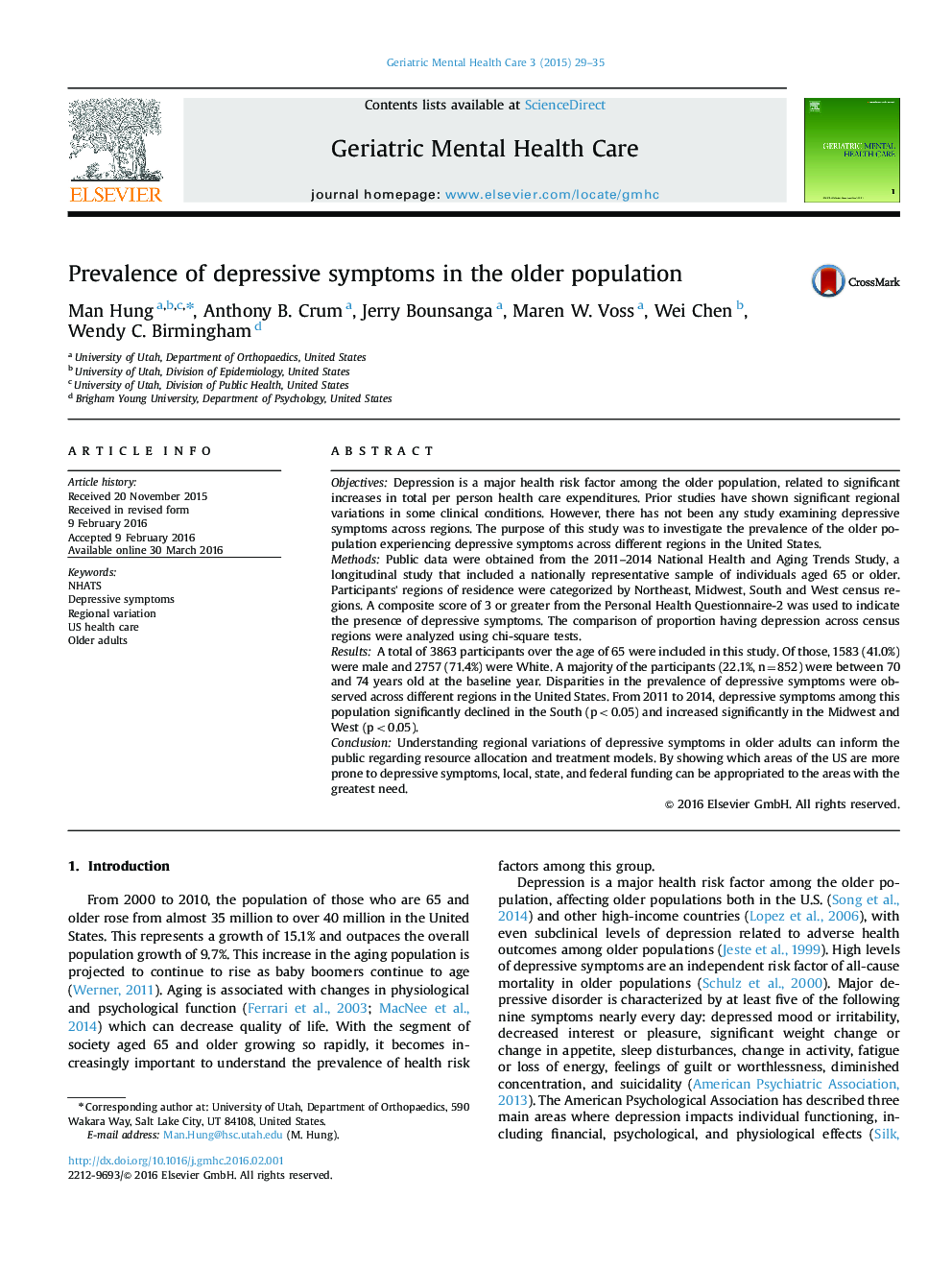| Article ID | Journal | Published Year | Pages | File Type |
|---|---|---|---|---|
| 909162 | Geriatric Mental Health Care | 2015 | 7 Pages |
ObjectivesDepression is a major health risk factor among the older population, related to significant increases in total per person health care expenditures. Prior studies have shown significant regional variations in some clinical conditions. However, there has not been any study examining depressive symptoms across regions. The purpose of this study was to investigate the prevalence of the older population experiencing depressive symptoms across different regions in the United States.MethodsPublic data were obtained from the 2011–2014 National Health and Aging Trends Study, a longitudinal study that included a nationally representative sample of individuals aged 65 or older. Participants’ regions of residence were categorized by Northeast, Midwest, South and West census regions. A composite score of 3 or greater from the Personal Health Questionnaire-2 was used to indicate the presence of depressive symptoms. The comparison of proportion having depression across census regions were analyzed using chi-square tests.ResultsA total of 3863 participants over the age of 65 were included in this study. Of those, 1583 (41.0%) were male and 2757 (71.4%) were White. A majority of the participants (22.1%, n=852) were between 70 and 74 years old at the baseline year. Disparities in the prevalence of depressive symptoms were observed across different regions in the United States. From 2011 to 2014, depressive symptoms among this population significantly declined in the South (p<0.05) and increased significantly in the Midwest and West (p<0.05).ConclusionUnderstanding regional variations of depressive symptoms in older adults can inform the public regarding resource allocation and treatment models. By showing which areas of the US are more prone to depressive symptoms, local, state, and federal funding can be appropriated to the areas with the greatest need.
